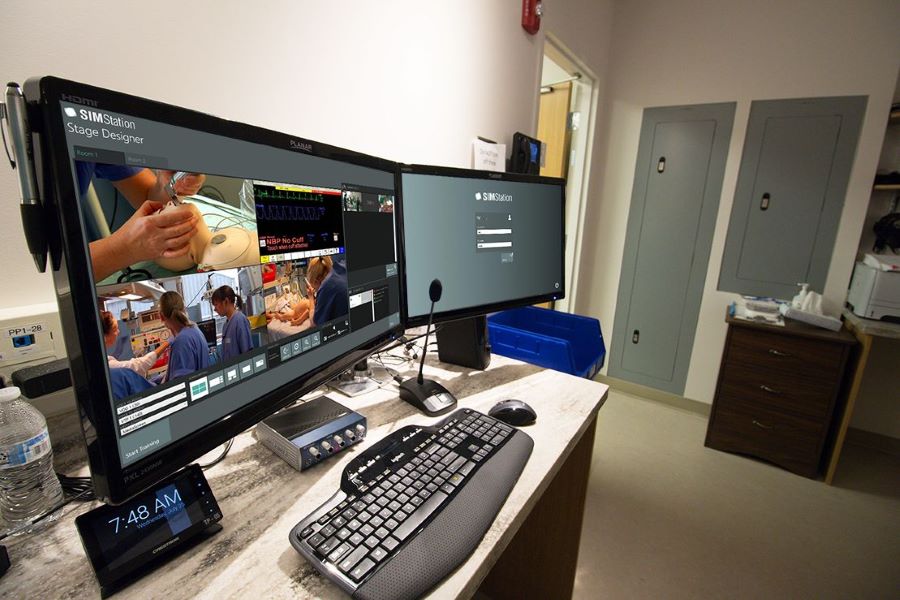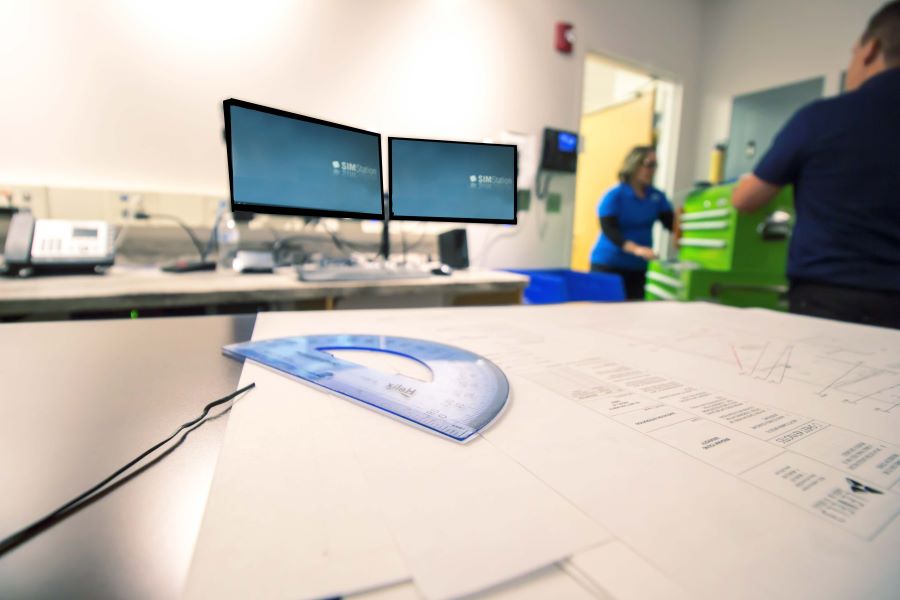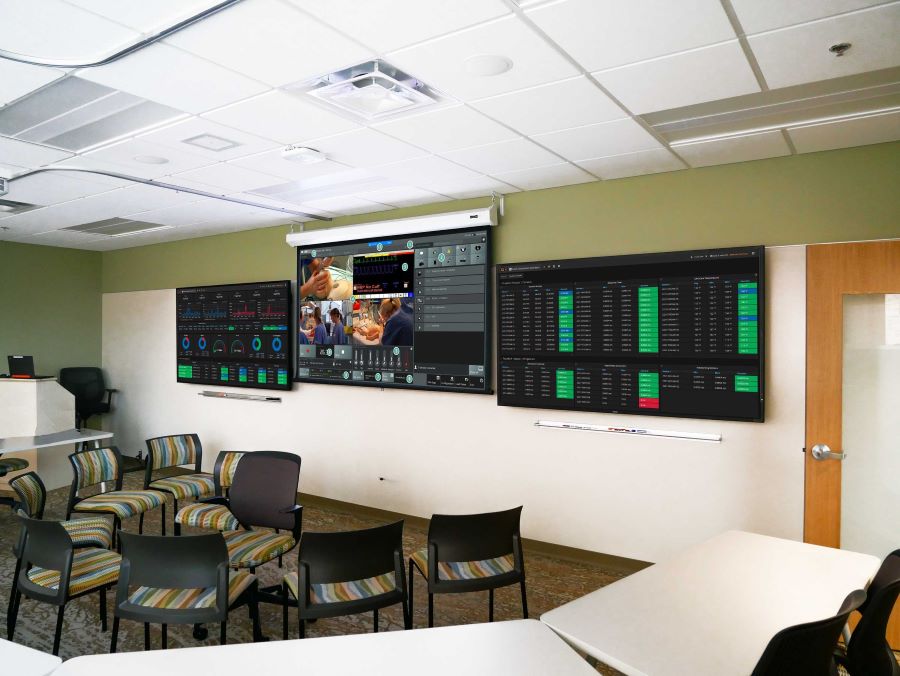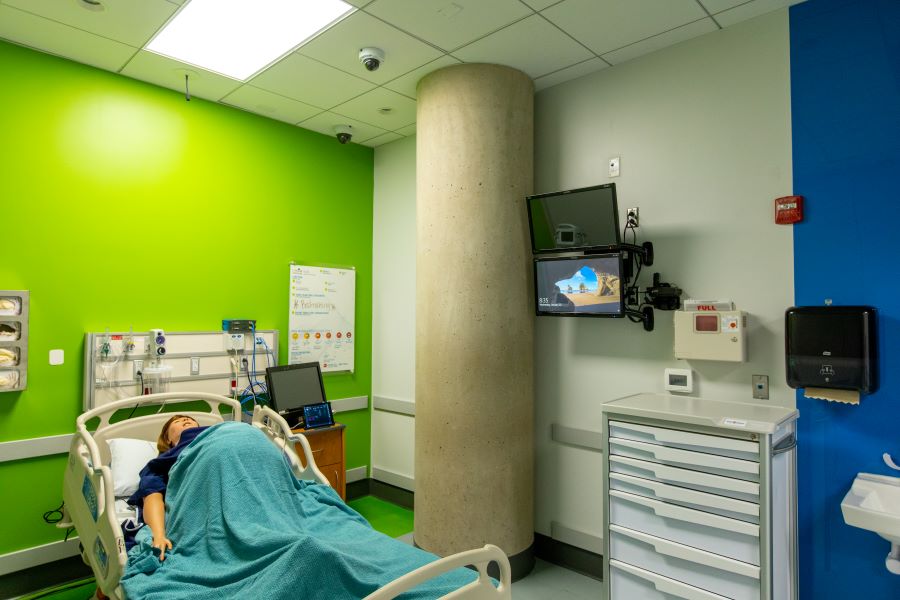Under a managed services contract, support is just a phone call away
The medical simulation lab in your university or training hospital is unlike any other system that makes up your AV infrastructure. It runs on a purpose-built computer with application-specific software, both of which require dedicated oversight and specialized training to manage properly.
Placing your simulation lab under a managed services contract with Level 3 Audiovisual takes the burden off your IT department for monitoring and managing your specialized system. For a fixed monthly price, 100% of your support needs will be handled by the Level 3 Audiovisual team as soon as issues arise. In many cases, our team even finds and resolves malfunctions before they create a noticeable problem in your lab.
Keep reading to learn how your healthcare simulation lab in Los Angeles, CA, or elsewhere in the U.S. will benefit from managed services.
on Friday, 26 November 2021.
Posted in Medical Simulation, Los Angeles, CA , Medical Simulation
Learn the who, what, where, when, why, and how of sim lab builds
Using simulation for medicine and healthcare education is at the forefront of healthcare technology applications in universities and training hospitals across the United States. Medical simulation labs are sophisticated educational tools that help prepare our future doctors and nurses for a safe and confident entrance to the world of medical care.
Planning and building a new healthcare simulation lab (or remodeling an existing one) is a complex process with several moving parts. Your facility’s goals and objectives, space limitations, equipment needs, and more must be addressed early to ensure the final product meets your expectations and can fulfill your program goals.
Below, we outline key considerations to keep in mind during the planning stages of a medical simulation lab for your facility in New York, City, NY, or worldwide.
on Thursday, 28 October 2021.
Posted in Simulation Medicine, New York City, NY, Simulation Medicine
Simulation labs are operating under new guidelines in the COVID-19 era
When the coronavirus pandemic swept through the U.S. at the start of 2020, it forced the partial or complete closure of medical simulation training labs for healthcare students. Now, over a year later, COVID-19 is still ravaging the world and delaying the return to work, school, public events, and other activities.
Unfortunately, the longer students remain out of the lab, the more their education suffers. Healthcare simulation is a vital tool for teaching our future medical professionals valuable clinical, communication, decision-making, and teamwork skills. With that thought in mind, many simulation labs in Los Angeles, CA, and across the U.S. are considering reopening.
on Monday, 30 August 2021.
Posted in Medical Simulation Training, Los Angeles, CA , Medical Simulation Training
EXPOSE MEDICAL TRAINEES TO THE TYPES OF SITUATIONS THEY’LL BE FACING IN THE REAL WORLD
Simulation-based education is an advanced tool for educating and training a new generation of doctors and nurses. Medical simulation technology uses a combination of AV components, advanced simulation software, and life-like training manikins to create hands-on, interactive scenarios that medical and nursing students are most likely to face in real life. Medical schools, teaching hospitals, and nursing programs in Washington, D.C., and across the U.S. are coming to realize the unique benefits simulation-based education brings to the medical field.
Among other training purposes, simulation labs are used to train students in three common healthcare scenarios where students can benefit from hands-on practice: emergency medicine simulation, surgery, and clinical exams. Keep reading to learn more.
on Friday, 30 April 2021.
Posted in Emergency Medicine Simulation, Washington, DC, Emergency Medicine Simulation
Everything You Need to Know about AV Standards for Healthcare Simulation
Every part of healthcare training and delivery has its own tools of the trade. A doctor has to know their way around a stethoscope and blood pressure cuff. And as a simulation technician, you need to know how to operate all the tools in your simulation lab, including audiovisual equipment and technology. But managing all that technology is no small feat, even for experienced sim techs. Here are some resources that can help.
on Thursday, 23 January 2020.
Posted in Healthcare Simulation, Medical Simulation
Many simulationists share a common issue when it comes to day-to-day operations in a simulation. The reality is, many simulation programs are understaffed, and most faculty already have more hats than they can comfortably wear. This has many programs looking closer at the evolving simulation operation specialist role. But where does one find someone with the skills needed without sacrificing an educator position? The shortage of nursing educators is a well-known concern; but too often the operations specialist role(s) merely become a strategy to fund another nursing educator.
on Wednesday, 10 October 2018.
Posted in Medical Simulation Training, Simulation Education
Building out a space for a healthcare simulation center involves much more than just finding a space and the technology to put into it. How will the technology work in the space to optimize workflows? How do you ensure the use of space and technology will be intuitive and user friendly? There are at least 430 simulation centers in the U.S., but only a fraction of those are accredited. One reason for that may be that there are a lot of needs, standards, and best practices that are overlooked, so it’s important to make sure you know what to consider from the planning phase.
on Sunday, 30 September 2018.
Posted in Healthcare Simulation, Medical Simulation
Imagine someone sitting you down in the cockpit of an airplane and telling you to figure out how to fly it. Seems ridiculous, right? The technology is so daunting and complex, anyone who isn’t a trained pilot would need a lot of help to figure it out. Sitting a faculty or staff member down in a simulation lab and telling them to run a scenario would be just as difficult and confusing for them—though probably not as terrifying. Without the proper training, simulation technology can be intimidating for educators. They can’t just sit down and figure it out. When faculty members are unsure of how to use a solution such as a simulation system, they are unlikely to support an organizational investment in it. They are also unlikely to use it even if the organization invests in the technology. However, removing common barriers, concerns, and misunderstandings faculty members face can help you improve buy-in and increase adoption of simulation solutions at your institution or organization.
on Tuesday, 24 July 2018.
Posted in Emergency Medicine Simulation, Healthcare Simulation
 Why Do Medical Simulation Labs Need Ongoing Managed Services?
Why Do Medical Simulation Labs Need Ongoing Managed Services? 







